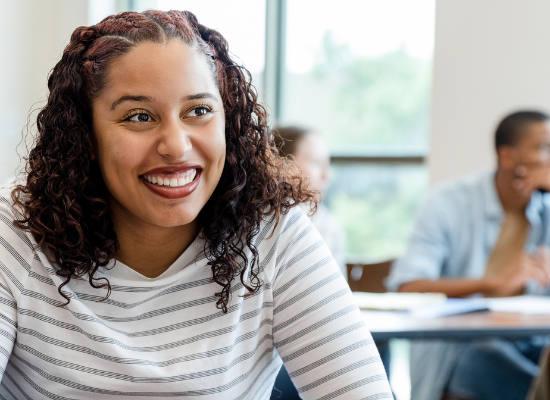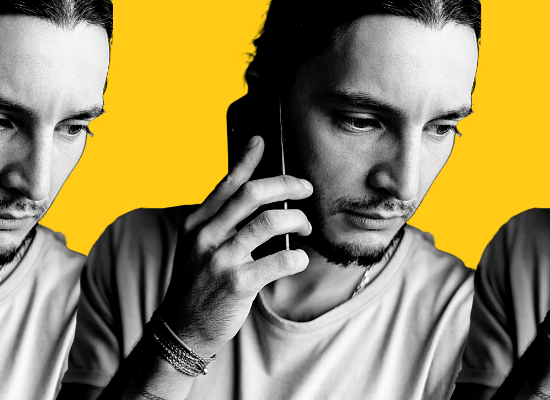
Stephanie Hepburn is a writer in New Orleans. She is the editor in chief of #CrisisTalk. You can reach her at .
In January 2020, Rachel Havekost started a blog and a TikTok account. She promised herself to tell her story publicly and “help at least one person feel less alone.” She didn’t know that in a few months, most Americans would be at home and social media use would spike by roughly 20%.
Social media has allowed Havekost, who has struggled with anorexia and depression, to rapidly expand her reach. She uses the platforms for storytelling and providing resources to more than 300K followers. “I wanted to bring in education,” she said. Havekost has a master’s degree in counseling and is intentional about including evidence-based information. “It’s important to me that I’m ethical and accurate about what I’m sharing.”
Writing has long been an outlet for Havekost, starting with her first diary at nine years old, where she’d process the happenings of her life. When writing her memoir “Where the River Flows,” she returned to her diaries and found her younger self struggling in ways she hadn’t remembered. “I’m 13, wondering if my friends would care if I wasn’t here anymore — adolescence is so hard.”
She says the intersection of the pandemic, believed to have increased dialogue about mental health, the launch of 988, and the shareability potential of social media has been instrumental in destigmatizing mental health. “It’s changed the landscape because we can quickly and exponentially share in this ‘I’m not alone’ moment.”
Social media’s short form and rapid dispersal are both assets for mental health and reasons why the platforms can be problematic. Havekost says consumers have difficulty distinguishing between posts with evidence-based information and those without. “The average consumer isn’t trained to appraise research, so they don’t know what is valid or reliable,” she said, adding that the platforms are unregulated. “People can say and do whatever they want.”
She points out that people in distress are particularly vulnerable to influencers and businesses promising quick, easy solutions, often at a cost. “When we’re struggling, we’re desperate for relief,” she said.
Social media can result in harmful rabbit holes and “recommended for you” algorithms that aren’t designed solely around user satisfaction but are also optimized for user engagement and advertisements. Revenue from advertisements is in the billions for many of the platforms, with ads on YouTube earning Alphabet Inc. $31.51 billion in 2023 and advertisements making up 98% of Meta’s $134.9 billion in revenue last year. (In March, CrisisTalk interviewed Meta whistleblower Arturo Bejar and reported on a bipartisan coalition of attorneys general from dozens of states suing Meta, accusing the tech giant of designing algorithms “to capitalize on young users’ dopamine responses and create an addictive cycle of engagement.”)
Influencers and businesses using social media, notes Havekost, need to be mindful that among their followers are people “in a really vulnerable state” consuming content to feel better. Some use social media for storytelling and imparting data and resources, while others are focused primarily on monetization or a mix of both. “On social media, there’s a huge pain-for-profit model,” she said, adding that businesses and many influencers use analytics to find the right hooks to funnel users into buying what they’re selling. “Sometimes, these things help; sometimes they don’t. It’s a tricky space for consumers to navigate.”
What continues attracting Havekost to social media is connectivity and destigmatization, both of which can help people navigating mental health challenges feel less alone. For years, she felt isolated. At 15, she was diagnosed with anorexia. Three years later, she started having suicidal thoughts. As a sophomore in college, she attempted suicide. “All along the way, I thought what I was experiencing was uncommon,” she said.
In high school, providers treated her mental health as an afterthought, emphasizing that all she needed to do was gain weight. After her suicide attempt in college, the university’s counselor only focused on whether Havekost was fit to return to class. “In one 30-minute session, they cleared me to go back to class and didn’t recommend any ongoing therapy,” she said, adding that the experiences deterred her from seeking help.
Havekost says there’s an openness and comfort around talking about mental health today that didn’t exist when she was growing up. The absence left schools and families ill-prepared to help young people. “They weren’t having these conversations and didn’t know how to identify signs of mental illness or what caring for your mental health looked like.”
When her ex-husband worried she was relapsing, he asked her to get help. “It was the first time someone had ever acknowledged that I was struggling and said, ‘And I love you, and I want you to feel better, and it’s OK to get help.’”
Havekost attended a pivotal four-month dialectical behavioral therapy skills outpatient program that included group therapy, group skills class, and one-on-one sessions with a therapist, nutritionist and doctor. Once a day, participants shared a meal together.
For the first two weeks, she sat silently while those around her talked about their struggles. She had two reactions — shock over her peers’ apparent comfort in sharing what they were going through and the recognition that she wasn’t alone. “I realized, ‘Oh, this isn’t a Rachel problem but something a lot of people deal with, which means maybe the therapy that I’m being offered could actually help me.’”
She leaned into therapy, learning as much as possible about helping herself and others. The program worked on developing skills she believes everyone should learn in elementary school, like identifying and regulating emotions, reframing thoughts, “asking for what you need, and saying no.” The positive experience, unlike those with mental health professionals in high school and college, made her want to help others who struggled as she did. “I was so inspired that I wanted to pay it forward and share my story publicly,” she said. And so she did.
In 2020, amid a world disrupted by a global pandemic, Havekost’s life was also upturned by divorce. She shifted all her social media content to focus on mental health. “I just kept writing and sharing.”
She’s built a large audience from the ground up, learning how to expand the community along the way. “It was like a five-person dinner party and the hope was people would want to bring a friend next time,” Havekost said, adding that she’d rotate between content topics to keep her audience engaged. “I’d cycle through them, creating familiarity and helping audiences feel safe and know what to expect when they came to my page.”
While social media doesn’t lend itself to long-format pieces, Havekost calls the platforms “a sound bite space” where she breaks down her articles and in-depth topics into smaller pieces and shares them. She highlights that the platforms have allowed her to educate people, provide resources, and “create a safe space for people to no longer feel alone and say, ‘Oh, wait, I identify those things in my own life.’”









